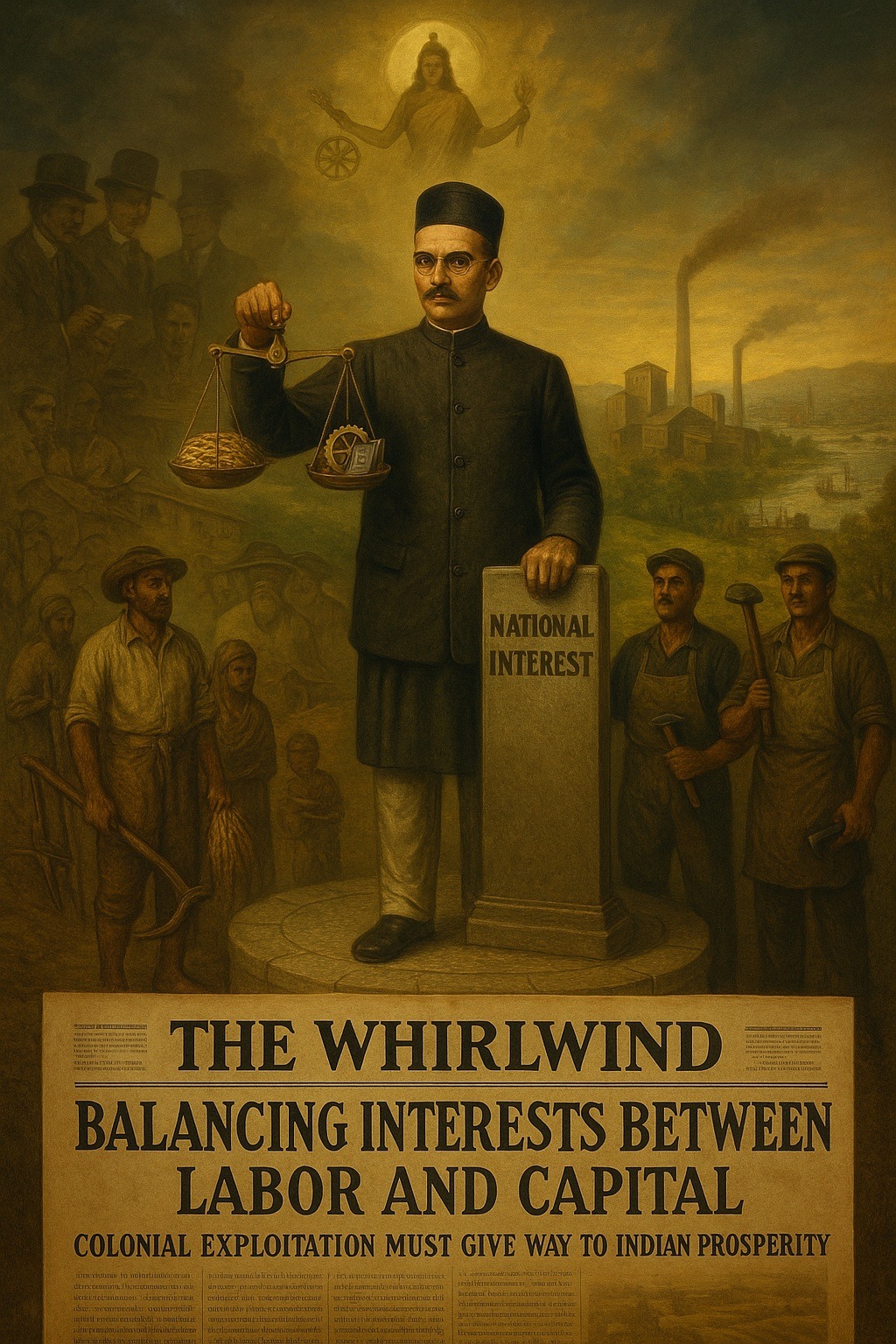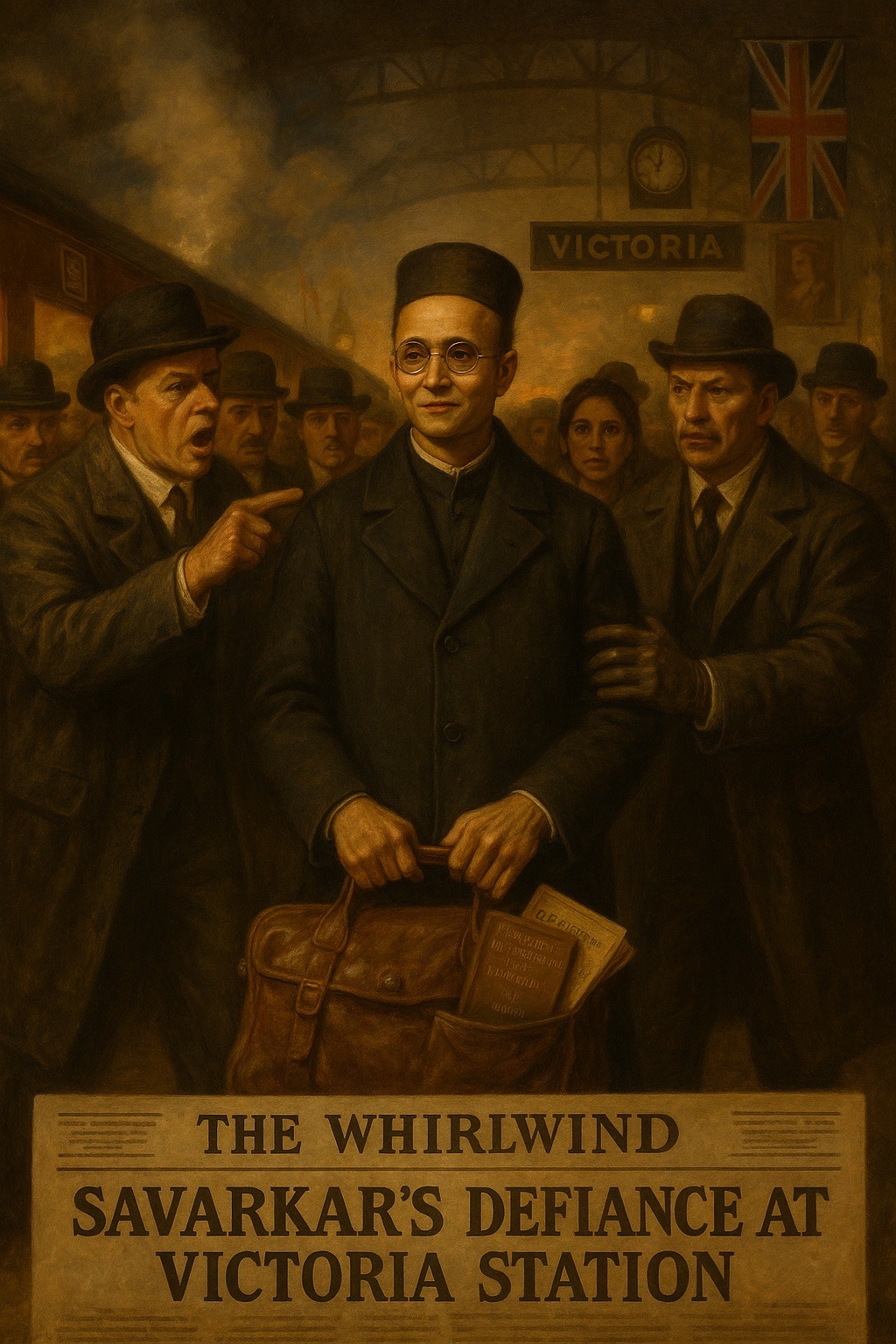All Blogs
Discover
The Whirlwind’s Archive
This section contains the complete archive of The Whirlwind is a blog dedicated to the life, thought, and influence of Vinayak Damodar Savarkar. Each entry explores aspects of his political action, philosophical thinking, social reform efforts, historical interpretations, and cultural legacy. The blog aims to offer critical insights into Savarkar’s role in shaping modern Indian political and ideological discourse.

-
Savarkar: Balancing Labor and Capital
Read more: Savarkar: Balancing Labor and CapitalEconomic Dimension of Hindutva, Part 9; Savarkar’s Economic Principles (5/13) The balance between labor and capital has long been a subject of debate in economic and political thought. Vinayak Damodar (Veer) Savarkar, known for his nationalist and revolutionary ideas, also put forward an economic perspective that sought to harmonize the interests of labor and capital…
-
Savarkar on Punyabhu: Holy Land or Homeland?
Read more: Savarkar on Punyabhu: Holy Land or Homeland?Savarkar’s Philosophy & Worldview, Part 7; Savarkar’s Agnosticism (4/4) In the ongoing exploration of Vinayak Damodar (Veer) Savarkar’s agnosticism, one of the most intriguing and misunderstood concepts is his use of the term Punyabhu or Punyabhumi, often translated as “Holy Land.” This term has sparked significant debate, with both critics and supporters misinterpreting its meaning.…
-
Savarkar and Anant Chaturdashi
Read more: Savarkar and Anant ChaturdashiReligious Tradition and Political Struggle Traditional Roots of the Festival Anant Chaturdashi, observed on the 14th day of the bright fortnight of Bhadrapada (August–September), is one of India’s important Hindu festivals. Traditionally dedicated to Lord Vishnu as the infinite (Anant) sustainer of the universe, it revolves around the tying of the sacred Anant Sutra –…
-
Savarkar’s Transfer to the S.S. Morea (1910)
Read more: Savarkar’s Transfer to the S.S. Morea (1910)On 1 July 1910, Vinayak Damodar Savarkar was removed from Brixton Prison under the heaviest of guards. His fate had been sealed: the British authorities had resolved to send him back to India to face trial in connection with revolutionary activities and the Nasik Conspiracy Case. For this purpose, he was placed aboard the French…
-
Savarkar at Bow Street Court – Bail Refused
Read more: Savarkar at Bow Street Court – Bail RefusedThe dramatic London chapter of Vinayak Damodar (Veer) Savarkar’s life reached a decisive turning point in March 1910. On Sunday, 13 March 1910, Savarkar was arrested at Victoria Station while waiting for a train. For months, the British authorities had been keeping him under close surveillance, suspecting his involvement in revolutionary networks that had sprung…
-
Savarkar’s Arrest in London
Read more: Savarkar’s Arrest in LondonOn Sunday, 13 March 1910, Vinayak Damodar (Veer) Savarkar’s revolutionary mission in Europe met a dramatic turning point. That evening, as he arrived by train from Newhaven (via Paris) at Victoria Station in London, he was arrested by officers of the Metropolitan Police under charges of sedition, conspiracy, and waging war against the British Crown.…
-
Savarkar on State-Led Capital Growth
Read more: Savarkar on State-Led Capital GrowthEconomic Dimension of Hindutva, Part 8; Savarkar’s Economic Principles (4/13) The economic trajectory of a nation is often shaped by its government’s role in capital accumulation and investment direction. In colonial India, where capital largely remained in private hands, Vinayak Damodar (Veer) Savarkar saw an essential role for the state in fostering national industries. He…










